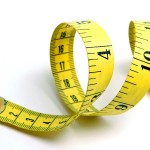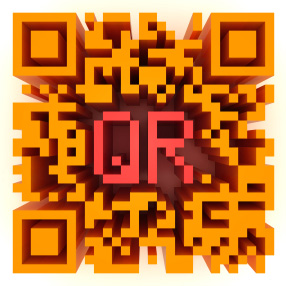Tips & Tricks For QR Codes

Why people don’t scan my QRs? How can I create a nice-to-the-eye QR code? These are common questions nowadays, especially since QR codes have become one of the most powerful marketing tools. If you use Quick Responsive links just for fun everything is OK but if you use them in your profession, then things get serious. Below I represent you several situations in which your QR code might be unappealing to the general public and some corresponding solutions.
Scanning Results
What happens after the scanning process? You should profoundly consider the case when you land the user in a web site. As long as 99% of the scans are performed with mobile devices or smartphones it is strongly advisable the site to be mobile-friendly. If not, this can be the first and the last time when a particular person tries to read your code.
Dimensions
 Second, but not less important are the size of your code and the density of the square modules. All QR barcode generator offer you different levels of error correction, which basically restores part of the encoded information if it is lost under unpredicted circumstances. There are four levels: Low (7%), Medium-Low (15%), Medium-High (25%) and High (30%), where the different percents show what part of the damaged codewords can still be presented during a scan. Although it sounds fantastic you should be careful because it is a double-edged knife. High levels are convenient because you can afford to lose part of your code, but at the same time the square modules become smaller and their density higher. This consequently makes the QR readable only from more sensitive cameras. My advice is carefully to decide do you really need high error correction levels because sometimes it might be more a drawback than a plus.
Second, but not less important are the size of your code and the density of the square modules. All QR barcode generator offer you different levels of error correction, which basically restores part of the encoded information if it is lost under unpredicted circumstances. There are four levels: Low (7%), Medium-Low (15%), Medium-High (25%) and High (30%), where the different percents show what part of the damaged codewords can still be presented during a scan. Although it sounds fantastic you should be careful because it is a double-edged knife. High levels are convenient because you can afford to lose part of your code, but at the same time the square modules become smaller and their density higher. This consequently makes the QR readable only from more sensitive cameras. My advice is carefully to decide do you really need high error correction levels because sometimes it might be more a drawback than a plus.
Custom Design
 Usually the first impression that something leaves in you can be crucial in the future. What I mean is that the usual QR and the visually edited QR can affect the user’s mind in a totally different way. Again I am going to refer to error correction. Choosing middle or high error correction level allows you to curve and soften the hard edges. You can even replace part of the symbols with a picture or a logo. Thus the barcode will be thematically associated with your company and will partly imply what it is connected with.
Usually the first impression that something leaves in you can be crucial in the future. What I mean is that the usual QR and the visually edited QR can affect the user’s mind in a totally different way. Again I am going to refer to error correction. Choosing middle or high error correction level allows you to curve and soften the hard edges. You can even replace part of the symbols with a picture or a logo. Thus the barcode will be thematically associated with your company and will partly imply what it is connected with.
Positioning
 There is a kind of tendency to put QR codes on main-road billboards. I don’t know about you, but in my opinion not many people are willing, at the average speed of 60 miles/h, to drive by and scan a code. High reachability is a key factor, especially if your aim is to promote a product. Be creative, show some out-of-the-box thinking and take advantage of people’s curiosity. The place you chose should be attractive and stimulating for the passer-by to stop and give your QR a few seconds. After all the design is not the only thing that can grab the attention of your target group.
There is a kind of tendency to put QR codes on main-road billboards. I don’t know about you, but in my opinion not many people are willing, at the average speed of 60 miles/h, to drive by and scan a code. High reachability is a key factor, especially if your aim is to promote a product. Be creative, show some out-of-the-box thinking and take advantage of people’s curiosity. The place you chose should be attractive and stimulating for the passer-by to stop and give your QR a few seconds. After all the design is not the only thing that can grab the attention of your target group.
Simple and Straightforward
 You should only use standard QR codes that do not require any additional applications (excluding the standard QR readers) or profiles to be read because this is something that can repel your prospective clients. After scanning a QR code, the user is asked to log in with his whatever profile in order to proceed. (I’m not using any names in so not to be accused of partiality). If he/she doesn’t have the required profile he/she has to register but this don’t happen, believe me. In most of the cases the user gets irritated because the content, encoded in the QR, is not available to the general public, in particular to him/her.
You should only use standard QR codes that do not require any additional applications (excluding the standard QR readers) or profiles to be read because this is something that can repel your prospective clients. After scanning a QR code, the user is asked to log in with his whatever profile in order to proceed. (I’m not using any names in so not to be accused of partiality). If he/she doesn’t have the required profile he/she has to register but this don’t happen, believe me. In most of the cases the user gets irritated because the content, encoded in the QR, is not available to the general public, in particular to him/her.
URL Shorteners
In few of the above paragraphs I mentioned that it is credential your code to be as simple as possible. This means that the square modules should be bigger and the embedded information – less. A practical solution of this problem (if you are encoding URLs of course) is the so called URL shortener. I will give you a brief example.
The first picture represents a long URL encoded in a QR code and the second picture represents the shortened version of the same URL. Basically the two codes will land the user at one and the same page with the only difference that the second one can be scanned 10 times easier and faster. Moreover URL shorteners have another main plus – they make the traffic to a certain web page harder to be traced. You shorten the URL of a site and instead of numerous sequence of symbols and digits it becomes http://bit.ly/xDe31t (bit.ly is a famous code shortener). Then you post the short version somewhere. When clicking on the posted link, the users are first redirected to the code shortener’s site and then to the actual site. So if someone wants to check who has visited the site all he/she will see will be bit.ly links.
The mobile market is greatly expanding which respectively means that QR codes will integrate in our lives more and more. If you want to create qualitative QRs and to reach wider audience with them try to follow the advices above. I hope that they will turn out to be only helpful and beneficial to you. Read more about QR codes in advertising.


